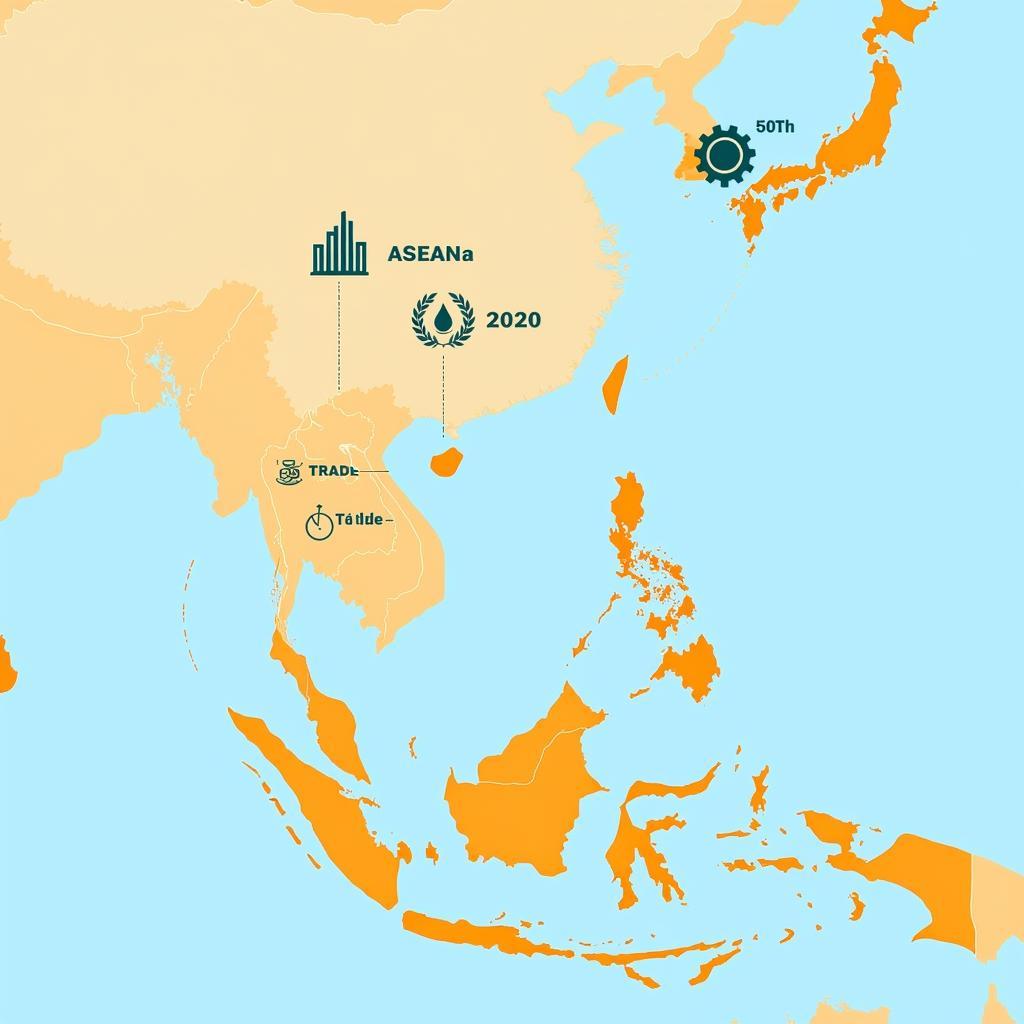The term “ASEAN Acts” often pops up when discussing Southeast Asia’s regional integration efforts. But what exactly are ASEAN Acts, and why should we care? This article delves into the core of ASEAN Acts, exploring their significance and impact on the region.
Understanding the Foundation: ASEAN Agreements
Before dissecting ASEAN Acts, it’s crucial to understand their position within the broader framework of ASEAN agreements. Essentially, ASEAN Acts represent a specific, legally binding category of agreements adopted by the Association of Southeast Asian Nations (ASEAN).
These agreements, ranging from broad frameworks to specific protocols, serve as the building blocks of ASEAN’s cooperation. They provide a roadmap for collaboration across diverse sectors, aiming to achieve a more integrated and prosperous Southeast Asia.
ASEAN Acts: The Cornerstones of Integration
ASEAN Acts hold a distinct legal status within this framework. Unlike other agreements that might be aspirational or voluntary, ASEAN Acts are legally binding on all member states. This means that once an Act is adopted, all ten ASEAN countries are obligated to incorporate its provisions into their domestic laws and policies.
This binding nature stems from the 1976 Treaty of Amity and Cooperation in Southeast Asia, which lays the groundwork for ASEAN’s legal framework and emphasizes the importance of adherence to agreements.
The Purpose and Scope of ASEAN Acts
ASEAN Acts are strategically crafted to address a wide array of issues crucial for regional integration. They aim to:
- Harmonize Laws and Regulations: ASEAN Acts strive to create a more consistent and predictable regulatory environment across Southeast Asia. By aligning national laws with agreed-upon regional standards, they facilitate smoother cross-border trade, investment, and movement of people.
- Strengthen Institutional Frameworks: Some ASEAN Acts focus on establishing or strengthening regional institutions responsible for implementing specific agreements. This strengthens ASEAN’s capacity to address transnational challenges collectively.
- Promote Rights and Protections: Certain Acts center on safeguarding the rights and welfare of ASEAN citizens. This can include areas such as labor migration, environmental protection, and disaster management.
Examples of ASEAN Acts in Action
To illustrate their practical application, let’s delve into some notable examples:
- ASEAN Charter (2007): This landmark Act formally established ASEAN as a legal entity and outlined its fundamental principles, objectives, and institutional framework. It marked a significant step towards a more rules-based and integrated ASEAN community.
- ASEAN Agreement on Transboundary Haze Pollution (2002): This Act addresses the recurring problem of haze pollution in Southeast Asia. It promotes regional cooperation in monitoring, preventing, and mitigating transboundary haze, aiming to protect public health and the environment.
- ASEAN Convention Against Trafficking in Persons, Especially Women and Children (2015): This Act reflects ASEAN’s commitment to combat human trafficking. It provides a legal framework for cooperation among member states to prevent and suppress trafficking, protect victims, and prosecute traffickers.
These are just a few examples highlighting the diversity and significance of ASEAN Acts in shaping various aspects of regional integration.
The Impact and Future of ASEAN Acts
ASEAN Acts have undoubtedly contributed to a more integrated and cooperative Southeast Asia. They have:
- Facilitated freer movement of goods, services, and skilled labor within the region.
- Enhanced regional cooperation on critical issues like security, environmental protection, and disaster management.
- Strengthened ASEAN’s international standing as a rules-based organization.
 Impact of ASEAN Acts on Regional Integration
Impact of ASEAN Acts on Regional Integration
However, challenges remain in fully implementing and enforcing these Acts. Differences in national capacities and political will can hinder the timely and effective implementation of agreed-upon provisions.
Moving forward, strengthening the legal and institutional mechanisms surrounding ASEAN Acts will be crucial for their effectiveness. This includes enhancing monitoring and enforcement mechanisms, promoting stakeholder engagement, and ensuring national laws are effectively harmonized with regional commitments.
Conclusion
ASEAN Acts are not merely documents; they are instruments of change driving Southeast Asia’s regional integration. By understanding their purpose, scope, and impact, we can appreciate their role in shaping a more prosperous, secure, and sustainable future for the region. As ASEAN continues to evolve, its Acts will remain crucial in navigating shared challenges and harnessing collective opportunities.
FAQ
1. What is the difference between an ASEAN Act and an ASEAN Agreement?
While all ASEAN Acts are ASEAN agreements, not all ASEAN agreements are Acts. ASEAN Acts are a specific type of agreement that is legally binding on all member states, requiring them to incorporate the provisions into their national laws.
2. How are ASEAN Acts enforced?
Enforcement mechanisms vary depending on the specific Act. Generally, they rely on a combination of national implementation, regional monitoring mechanisms, and dispute settlement procedures outlined within ASEAN.
3. Where can I find the full text of ASEAN Acts?
The ASEAN Secretariat website provides access to the official texts of all ASEAN agreements, including Acts.
Explore More
Need help navigating the complexities of ASEAN? Contact us at 0369020373, email us at [email protected], or visit us at Thôn Ngọc Liễn, Hiệp Hòa, Bắc Giang, Việt Nam. Our dedicated team is available 24/7 to assist you.
